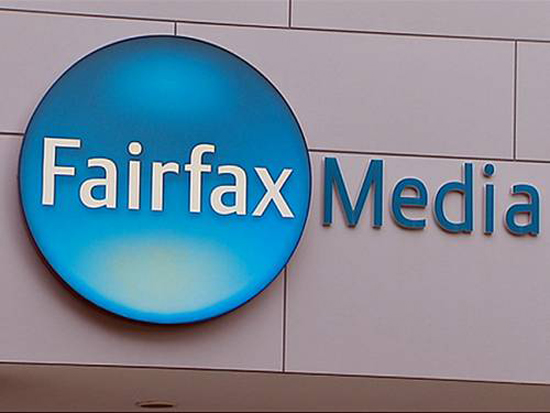
Justin Norrie of The Conversation
SYDNEY: (SBS / Pacific Media Watch): Fairfax Media has announced it will slash 1900 jobs, shut its main printing plants, and take its two biggest mastheads – The Sydney Morning Herald and The Age – tabloid in preparation for a move to a “digital-only” future.
The job cuts will include 300 positions across the company’s metropolitan newspapers. Half of those will come from editorial ranks, Metro Division CEO Jack Matthews wrote in an email to staff.
“Many of these redundancies will occur over the next 2-3 months,” he wrote.
Under a new “digital-first model”, newsrooms will become fully converged across “digital, print and mobile platforms”, the company said. There will also be “greater sharing of editorial content” between bureaus and newsrooms at different mastheads.
Soon after Fairfax revealed the plans to the Australian Stock Exchange (ASX), staff in newsrooms in Sydney and Melbourne took to social media to express their shock at the scale of the restructure. Award-winning journalist Kate McClymont, from The Sydney Morning Herald, said there was “numbness pervading the SMH newsroom”.
In its note to the ASX, Fairfax said the changes were designed to “provide flexibility to move the business to a digital-only model if that is what is required in future”.
To assist with the transition, the company will close its Chullora and Tullamarine printing plants in June 2014, and shift printing to the Fairfax network, formerly Rural Press printers.
Tabloid format
The Sydney Morning Heraldand The Age will move to tabloid format from next March, Fairfax said in the statement.
Both mastheads will introduce “metered” pay wall models for their websites. The model will permit a “base level of free access”, beyond which users will be required to pay depending on how much content they access. The pricing will be announced by the end of the year.
Chief executive and managing director Greg Hywood said: “No one should be in any doubt that we are operating in very challenging times. Readers' behaviours have changed and will not change back. As a result, we are taking decisive actions to fundamentally change the way we do business.”
Julie Posetti, a journalism lecturer at the University of Canberra who is contracted to provide social media training to journalists at The Sydney Morning Herald, said the news was deeply disconcerting for the industry.
“But Fairfax had to make a decision to dramatically alter its approach to the digital production of journalism. I welcome the overall strategy to move to an online publication model in a truly converged environment. This is going to be a very painful transition, but it’s a transition that was inevitable and necessary if the company is to have a sustainable future.”
Posetti said that the shift from print to digital journalism was not necessarily a precursor to a decline in quality.
“But I would be concerned if a significant portion of those jobs that are under the axe are editorial jobs. What is important is that news organisations such as The Sydney Morning Herald and The Age, very high-profile news brands, can continue to be able to produce strong, quality, investigative journalism. That does require a significant and ongoing investment in journalists.
Investment in journalists
“You can change publication platform, and you can change processes and practices to embrace emerging journalistic approaches, but you still need to invest in journalists.”
The announcement was a “major reality check”, said Andrew Dodd, a senior lecturer in journalism at Swinburne University.
“Under Greg Hywood’s direction, Fairfax has been fighting this, but it has manifestly failed to hold back the tide of history.
“I think we’ve got to the point now where Fairfax is so desperate that it’s had to capitulate on all fronts.
“I do believe that at least some of Fairfax management understand that content is still king, and that they have to invest in it. But it remains the most expensive component of the business. You can appreciate the pressures to downsize and get rid of reporters are enormous.
“The dilemma for any news executive is how to retain quality journalism while making the business pay. I feel for them, because there is no easy answer – and if you want to retain quality journalism, you simply have to now do everything you can to create economies of scale, which means things like tabloid presentation, combining bureaus, consolidating sub-editing – everything that everyone is doing. I don’t believe that newspapers reach these positions lightly, and we need to recognise that this is an assignment of absolute desperation.”
Dodd said there was inevitably a loss of pluralism and diversity in the media when organisations such as Fairfax were forced to downsize so dramatically.
'Many opportunities'
“But we shouldn’t lose heart, because there are lots of opportunities. We just need to keep working to find the ones that are sustainable as a paid endeavour.”
Margaret Simons, director for the Centre for Advanced Journalism at the University of Melbourne, said the challenge for print media was to find a sustainable business model “and also to find out at what level that model is sustainable. Sadly I don’t think there is one that can support the large numbers of journalists presently employed in those newsrooms.
“I don’t think this is the last announcement we’re going to hear out of Fairfax. With the share price the way it is, it’s quite likely that there will be a takeover attempt and if it’s private equity that takes it over, then splitting the company up remains an option on the table.”
The move to a metered model of payment for digital access was “a logical approach because the difficulty of paywalls is to remain part of the conversation, to be able to have people to link to your content, and also get significant revenue from subscriptions. So getting that balance right is something everybody’s been playing with”.
This work is licensed under a Creative Commons Attribution-NonCommercial 3.0 New Zealand Licence.




